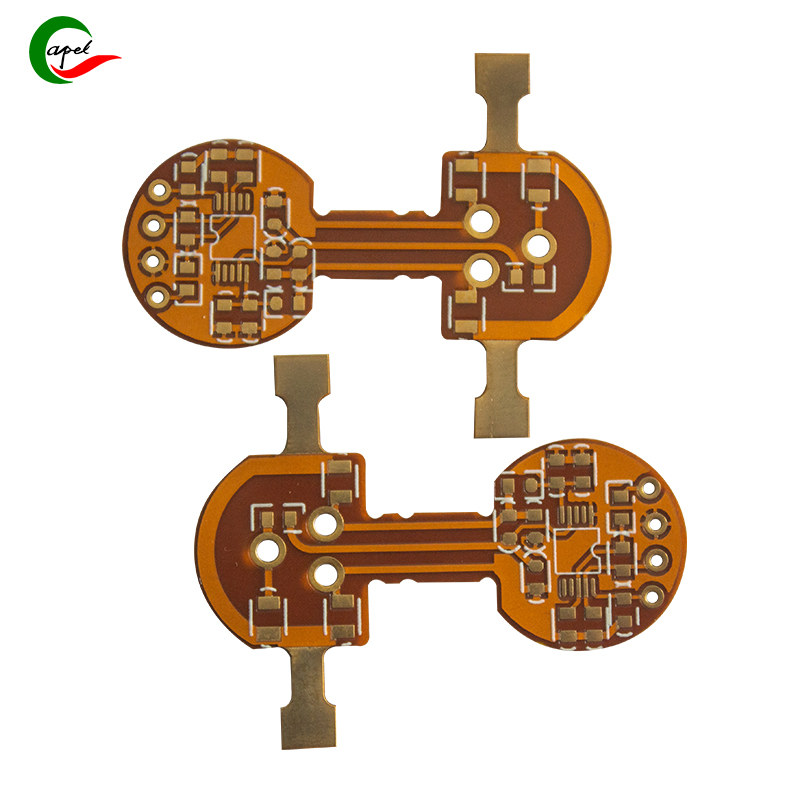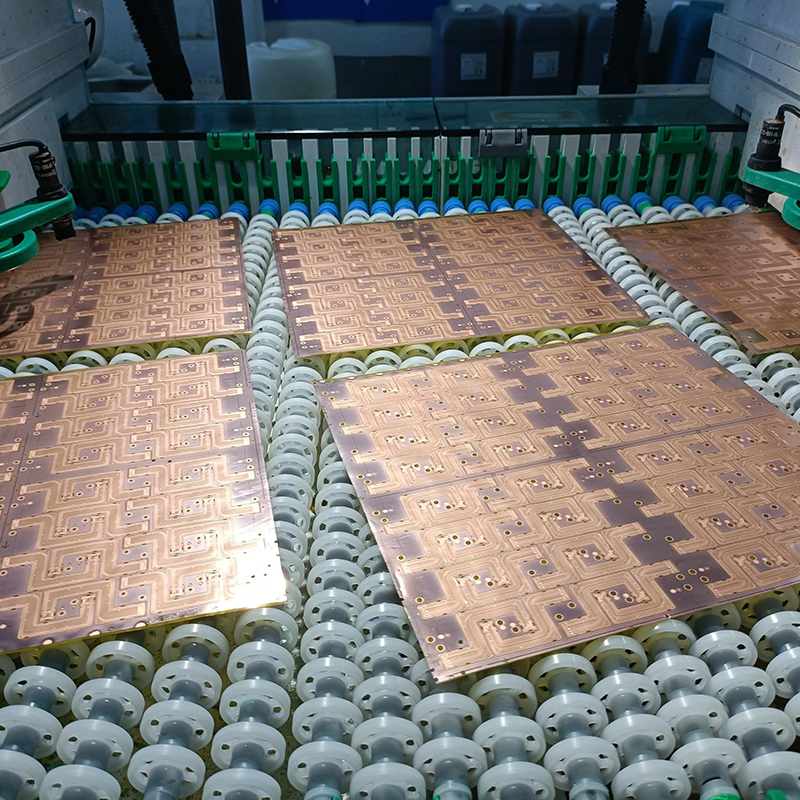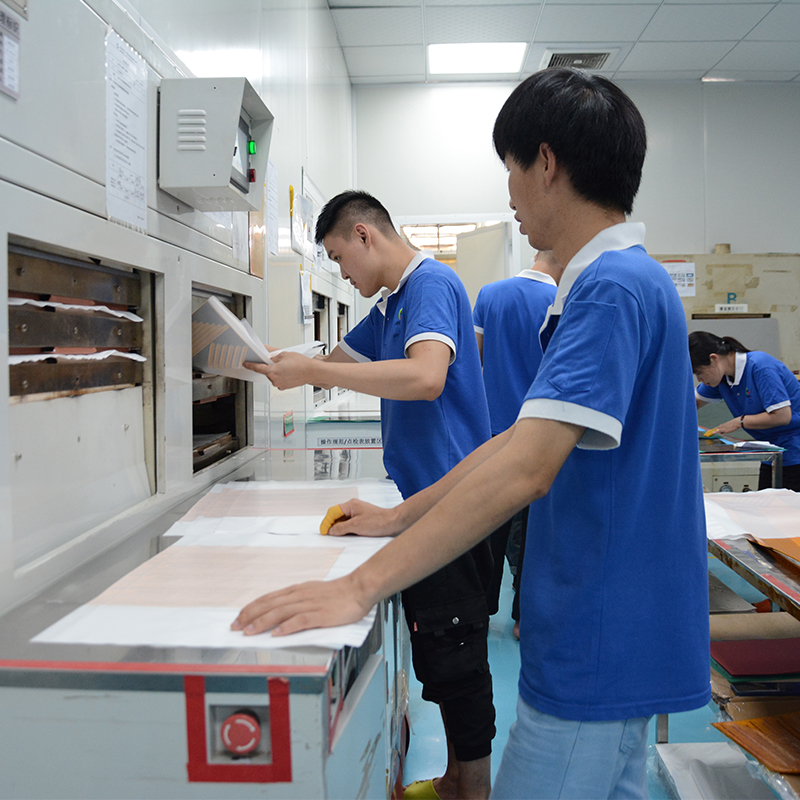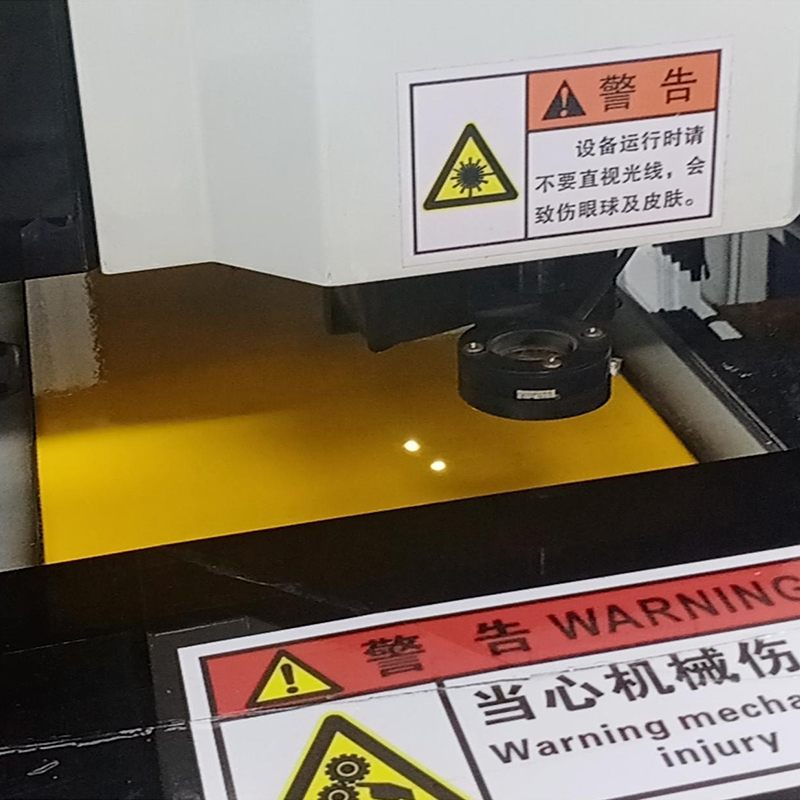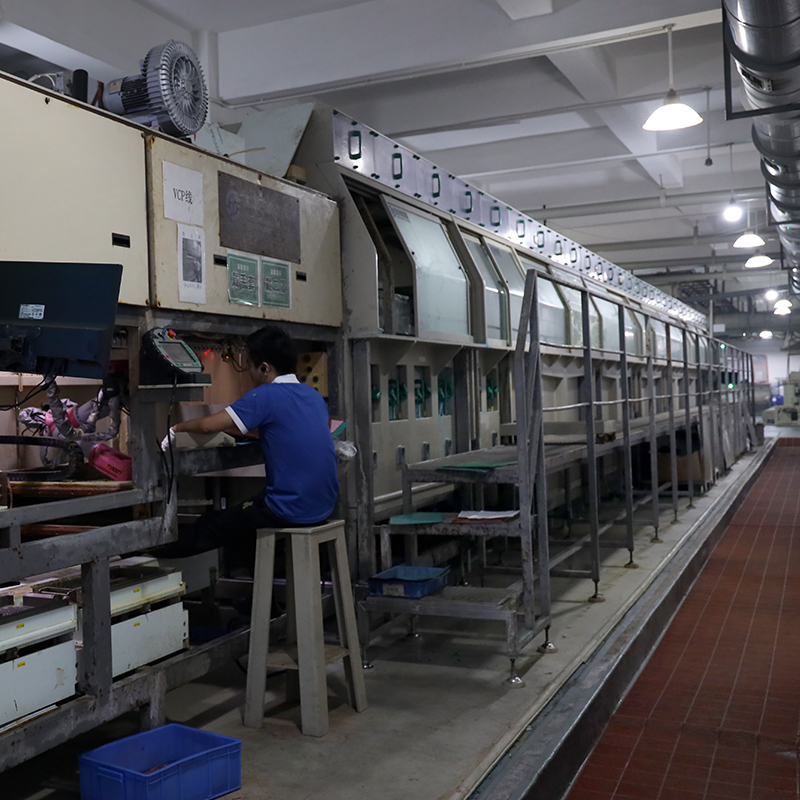Flexible printed circuit boards (PCBs), also known as flex PCBs, have become increasingly popular in recent years due to their unique bend and twist capabilities. These flexible circuit boards are highly versatile and find applications in numerous industries, including automotive, consumer electronics, healthcare, and telecommunications. When ordering flex PCBs, it is essential to understand the factors that impact their pricing in order to achieve cost-effectiveness and efficiency. In this article, we will delve into the key factors that influence flex PCB quotation, enabling you to make informed decisions when placing orders. By gaining knowledge on these factors, you can optimize your budget and ensure that your PCB requirements align with your specific needs and industry standards.
1.Design Complexity:One of the main factors affecting flexible PCB quotations is design complexity.
Design complexity plays a crucial role in determining the manufacturing cost of flex PCBs. Complex designs often involve complex circuitry, advanced functionality, and unique requirements that require specialized equipment and processes. These additional requirements increase production time and effort, resulting in higher manufacturing costs.
One aspect of the design complexity is the use of fine pitch components. Fine-pitch components have narrower lead pitches, which require higher precision in the manufacturing process. This requires specialized equipment and processes to ensure precise fit. The extra steps and precautions required for fine-pitch components add to manufacturing complexity and cost.
Small bend radii are another factor affecting design complexity. Flexible printed circuit boards are known for their ability to bend and twist, but when bend radii are extremely small, this creates constraints on the manufacturing process. Achieving small bend radii requires careful material selection and precise bending techniques to avoid circuit damage or deformation. These additional considerations increase manufacturing complexity and cost.
In addition, complex circuit routing is another aspect that affects design complexity. Advanced designs often require complex signal routing, power distribution, and ground planes. Achieving precise routing in flex PCBs can be challenging and may require additional steps such as specialized copper plating techniques or the use of blind and buried vias. These additional requirements increase manufacturing complexity and cost.
2.Material selection:Another key factor in determining flexible PCB quotations is the choice of materials.
Material selection is a key consideration in determining the cost of a flexible PCB. Different substrates offer different levels of performance and cost impact. Material selection depends on specific application requirements.
Polyimide (PI) is known for its high-performance properties, including excellent thermal stability and flexibility. It can withstand high temperatures and is suitable for applications with higher operating temperatures. However, the superior performance of polyimide comes at a higher cost compared with other materials. This is due to the more complex and costly manufacturing process of polyimide raw materials.
Polyester (PET) is another common substrate for flexible PCBs. It is cheaper than polyimide and has good flexibility. Polyester-based flex PCBs are suitable for applications with lower temperature requirements. However, the thermal stability of polyester is not as good as that of polyimide, and its overall performance may be lower. For cost-sensitive applications with less demanding operating conditions, polyesters are a viable and cost-effective choice.
PEEK (polyetheretherketone) is a high-performance material widely used in demanding applications. It has excellent mechanical and thermal properties and is suitable for extreme conditions. However, PEEK is much more expensive than polyimide and polyester. It is often chosen for applications where superior performance is required and a higher material cost can be justified.
In addition to the substrate material, other materials used in the manufacturing process, such as laminates, cover films and adhesive materials, also affect the overall cost. The cost of these additional materials may vary depending on their quality and performance characteristics. For example, high-quality laminates with improved electrical properties or specialized cover films with enhanced protection against environmental factors can add to the overall cost of a flexible PCB.
3.Quantity and puzzle:The quantity of flexible PCB required plays an important role in determining the quotation.
Required quantity is a major factor when pricing flex PCBs. Manufacturers typically practice quantity-based pricing, which means that the higher the quantity, the lower the unit cost. This is because larger orders allow for better economies of scale and thus lower production costs
Another way to optimize material usage and manufacturing efficiency is panelization. Panelization involves combining multiple smaller PCBs into a larger panel. By strategically arranging designs on panels, manufacturers can minimize waste and maximize productivity during the manufacturing process.
Panelization has several benefits. First, it reduces material waste by making more efficient use of the space available on the panel. Instead of producing separate PCBs with their own borders and spacing, manufacturers can place multiple designs on a single panel, making the most of the unused space in between. This results in significant material savings and cost reductions.
In addition, panelization simplifies the manufacturing process. It enables a more automated and efficient production process as multiple PCBs can be processed simultaneously. This increases productivity and reduces manufacturing time, resulting in shorter lead times and lower costs. Efficient panelization requires careful planning and consideration of factors such as PCB size, design requirements, and manufacturing capabilities. Manufacturers can utilize specialized software tools to aid in the panelization process, ensuring optimal alignment and efficient use of materials.
Plus, the panel design is easier to handle and transport. After the manufacturing process is complete, the panels can be separated into individual PCBs. This simplifies packaging and reduces the risk of damage during shipping, which ultimately saves money.
4.Surface Finish and Copper Weight:Surface finish and copper weight are key considerations in the flexible PCB manufacturing process.
Surface finish is an important aspect of PCB manufacturing as it directly affects the solderability and durability of the board. The surface treatment forms a protective layer over the exposed copper traces, preventing oxidation and ensuring reliable solder joints. Different surface treatments have different costs and benefits.
A common finish is HASL (Hot Air Solder Leveling), which involves applying a layer of solder to the copper traces and then using hot air to level them. HASL is cost-effective and offers good solderability, but may not be suitable for fine-pitch or fine-pitch components due to the uneven surface it produces.
ENIG (Electroless Nickel Immersion Gold) is another widely used surface treatment. It involves depositing a thin layer of nickel over copper traces, followed by a layer of gold. ENIG’s excellent solderability, flat surface, and corrosion resistance make it suitable for fine-pitch components and high-density designs. However, ENIG has a high cost compared to other surface treatments.
OSP (Organic Solderability Preservative) is a surface treatment that involves the application of a thin layer of organic material to protect copper traces. OSP offers good solderability, planarity and cost-effectiveness. However, it is not as durable as other finishes and may require careful handling during assembly.
The weight (in ounces) of copper in a PCB determines the conductivity and performance of the board. Thicker layers of copper provide lower resistance and can handle higher currents, making them suitable for power applications. However, thicker copper layers require more material and sophisticated manufacturing techniques, thereby increasing the overall cost of the PCB. In contrast, thinner copper layers are suitable for low-power applications or applications where space constraints exist. They require less material and are more cost-effective. The choice of copper weight depends on the specific requirements of the PCB design and its intended function.
5.Manufacturing Technology and Mold:The manufacturing techniques and tools used to produce flexible PCBs also affect pricing.
Manufacturing technology plays a vital role in the production of flexible PCBs and has a major impact on pricing. Advanced technologies, such as laser drilling and sequential build-up (SBU), can create complex and precise designs, but these methods often come with higher production costs. Laser drilling can form fine vias and small holes, enabling high-density circuits in flexible PCBs. However, the use of laser technology and the precision required for the process increases production costs.
Sequential build up (SBU) is another advanced manufacturing technique that involves layering together multiple flex circuits to create more complex designs. This technology increases design flexibility and enables the integration of various functions in a single flexible PCB. However, additional complexity in the manufacturing process increases production costs.
In addition to manufacturing techniques, the specific processes involved in producing flexible PCBs can also affect pricing. Processes such as plating, etching, and lamination are important steps in the manufacture of a fully functional and reliable flexible PCB. The quality of these workmanship, including the materials used and the level of precision required, affects the overall cost
Automation and innovative tools help increase productivity and efficiency in the manufacturing process. Automated machinery, robotics, and computer-aided manufacturing (CAM) systems can simplify production, reduce human error, and speed up the manufacturing process. However, implementing such automation may incur additional costs, including upfront investment in equipment and training of personnel.
Additionally, the use of innovative tools and technologies, such as advanced PCB design software and inspection equipment, can help drive up pricing. These tools often require specialized expertise, maintenance and updates, all of which add to the overall cost. Manufacturers need to carefully consider the balance between manufacturing technologies, processes, automation and innovative tools to achieve the cost and quality balance required for flexible PCB production. By analyzing the specific requirements of a project and working with customers, manufacturers can determine the most appropriate technologies and processes while minimizing costs and ensuring the best possible production results.
6.Delivery time and shipping:The required lead time is an important factor affecting the flexible PCB quotation.
When it comes to flexible PCB lead time, lead time plays a vital role. Lead time is the time it takes for a manufacturer to complete production and be ready for an order to ship. Lead times are affected by several factors, including the complexity of the design, the number of PCBs ordered, and the manufacturer’s current workload.
Rush orders or tight schedules often require manufacturers to prioritize production and allocate additional resources to meet deadlines. In such cases, production may need to be expedited, which may result in higher costs. Manufacturers may charge expedited fees or implement special handling procedures to ensure that flexible PCBs are manufactured and delivered within the stipulated time.
Shipping costs also affect the overall cost of a flex PCB. Shipping costs are determined by several factors. First, the delivery location plays an important role in the shipping cost. Shipping to remote or distant locations may involve higher costs due to increased shipping charges. In addition, the urgency of the delivery will also affect the shipping cost. If a customer requires express or overnight shipping, shipping costs will be higher compared to standard shipping options.
Order value also affects shipping costs. Some manufacturers may offer free or discounted shipping on large orders as an incentive for customers to place bulk orders. On the other hand, for smaller orders, shipping charges may be relatively high to cover the costs involved in packaging and handling.
To ensure efficient shipping and minimize costs, manufacturers can work closely with logistics providers to determine the most cost-effective shipping method. This can involve choosing the right shipping carrier, negotiating favorable shipping rates, and optimizing packaging to reduce weight and size.
To sum up, there are many factors that affect the quotation of flexible PCB. Customers with a clear understanding of these factors can make informed decisions and optimize their manufacturing processes. Design complexity, material selection and quantity are the key factors affecting the cost of flexible PCB. The more complex the design, the higher the cost. Material choices, such as choosing a high-quality substrate or surface finish, can also affect price. Also, ordering larger quantities often results in bulk discounts. Other factors, such as paneling, copper weight, fabrication techniques and tooling, also play a role in determining cost. Paneling allows efficient use of materials and reduces costs. The weight of copper affects the amount of copper used, which affects the cost and functionality of the flex PCB. Manufacturing techniques and tooling, such as the use of advanced technology or specialized tooling, can affect prices. Finally, lead time and shipping are important considerations. Additional charges may apply for rush orders or expedited production, and shipping costs depend on factors such as location, urgency, and order value. By carefully evaluating these factors and working with an experienced and reliable PCB manufacturer, companies can customize a cost-effective and high-quality flexible PCB that meets their specific needs.Shenzhen Capel Technology Co., Ltd. has been manufacturing flexible printed circuit boards (PCBs) since 2009. Currently, we are able to provide custom 1-30 layer flexible printed circuit boards. Our HDI (High Density Interconnect) flexible PCB manufacturing technology is very mature. Over the past 15 years, we have continuously innovated technology and accumulated rich experience in solving project-related problems for customers.
Post time: Aug-31-2023
Back


